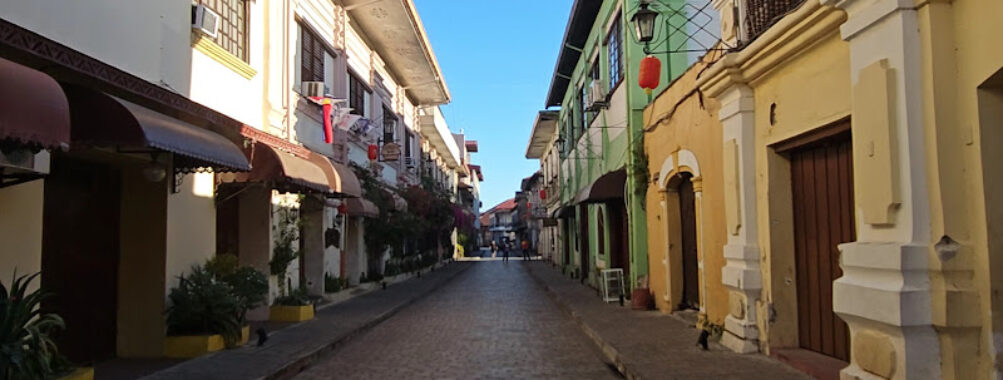
Historic Town of Vigan
Table of Contents
Description
[Vigan is the capital of Ilocos Sur province](https://rowiewanderlist.wordpress.com/2019/02/21/the-historic-city-of-vigan/) and stands as a remarkable testament to the Philippines’ rich colonial past. As [the best-preserved example of a planned Spanish colonial town in Asia](https://whc.unesco.org/en/list/502/), this extraordinary city captivates visitors with its unique blend of Filipino, Chinese, and European architecture. Walking through its historic streets feels like stepping back in time to the 16th century, when Spanish colonizers first established this trading hub.
The cobblestone streets, especially the famous Calle Crisologo, showcase ancestral houses with their distinctive architecture – a fascinating mix of Spanish colonial design with local and Asian influences. I’ve visited numerous heritage sites across Southeast Asia, but there’s something genuinely special about how Vigan preserves its cultural authenticity while remaining a living, breathing city.
Key Features
• Heritage houses with capiz shell windows and red-tiled roofs
• Historic Calle Crisologo with its iconic cobblestone streets
• Traditional handicraft workshops and antique shops
• Local weaving industry showcasing abel Iloco textiles
• Plaza Salcedo and Plaza Burgos, the city’s main squares
• St. Paul’s Metropolitan Cathedral
• Authentic Ilocano cuisine restaurants
• Horse-drawn kalesa rides through historic districts
• Pottery making workshops in Pagburnayan
• Crisologo Museum and other heritage museums
Best Time to Visit
The months between November and February offer the most pleasant weather conditions to explore Vigan. The temperature stays moderate, and rainfall is minimal during these months. Ya know what’s cool? During December, the city comes alive with the Vigan City Fiesta, featuring street parties, cultural shows, and food festivals.
But honestly, I visited during July once, and despite a few afternoon showers, the overcast skies made for perfect photo opportunities of those gorgeous ancestral houses. Plus, there were way fewer tourists! Just remember to pack a small umbrella if you’re visiting during the wet season (June to October).
How to Get There
Getting to Vigan might take a bit of effort, but trust me – it’s totally worth it. From Manila, you’ve got several options. I recommend taking an overnight bus – it’s about 8 hours, and you’ll wake up right in the heart of history! First-class buses are pretty comfy, and you’ll save on a night’s accommodation.
If you’re not into long bus rides, domestic flights to Laoag International Airport are available. From there, it’s roughly a 2-hour drive to Vigan. You can grab a bus or arrange private transportation – personally, I think the private transfer is worth the extra pesos if you’re traveling with family or carrying lots of luggage.
Tips for Visiting
Here’s the real deal about making the most of your Vigan adventure. First off, wake up early! I mean really early. The streets are magical during sunrise, and you’ll get those perfect photos without crowds of tourists photobombing your shots. Plus, the morning light hitting those ancestral houses? Absolutely incredible.
Bring cash – lots of it. While some bigger establishments accept cards, many local shops, especially those selling traditional crafts and food, are cash-only. And speaking of shopping, don’t rush into buying those gorgeous handicrafts from the first shop you see. Take your time to compare prices and quality – they can vary quite a bit.
Try to spend at least two nights here. Most folks try to rush through Vigan in a day, but they miss out on so much! The city has a completely different vibe after sunset when the old street lamps light up Calle Crisologo. That’s also when many locals come out, and the temperature becomes more bearable.
Don’t skip the local food scene! Seriously, you haven’t experienced Vigan until you’ve tried authentic bagnet (crispy pork belly), longganisa (local sausage), and empanada. I still dream about that empanada stand near Plaza Burgos – the orange-colored dough stuffed with local ingredients and that special Ilocos vinegar? Heaven!
Hire a local guide for at least half a day. Yeah, you can explore on your own, but these guys know all the hidden spots and stories that aren’t in any guidebook. My guide showed me this tiny workshop where they still make traditional pottery the old-school way – totally missed that in all my pre-trip research.
And here’s a pro tip: book your accommodation in advance, especially during peak season or local festivals. The best heritage houses that have been converted into hotels fill up quickly. Trust me, staying in one of these historic buildings adds a whole new dimension to your Vigan experience.
Remember to respect local customs and dress modestly, especially when visiting religious sites. And while those horse-drawn kalesa rides are super charming, make sure to negotiate the price before hopping on. Oh, and don’t forget to bring a hat and water bottle – the Philippine sun can be pretty intense, even during cooler months!
Location
Places to Stay Near Historic Town of Vigan
Find and Book a Tour
Explore More Travel Guides
No reviews found! Be the first to review!